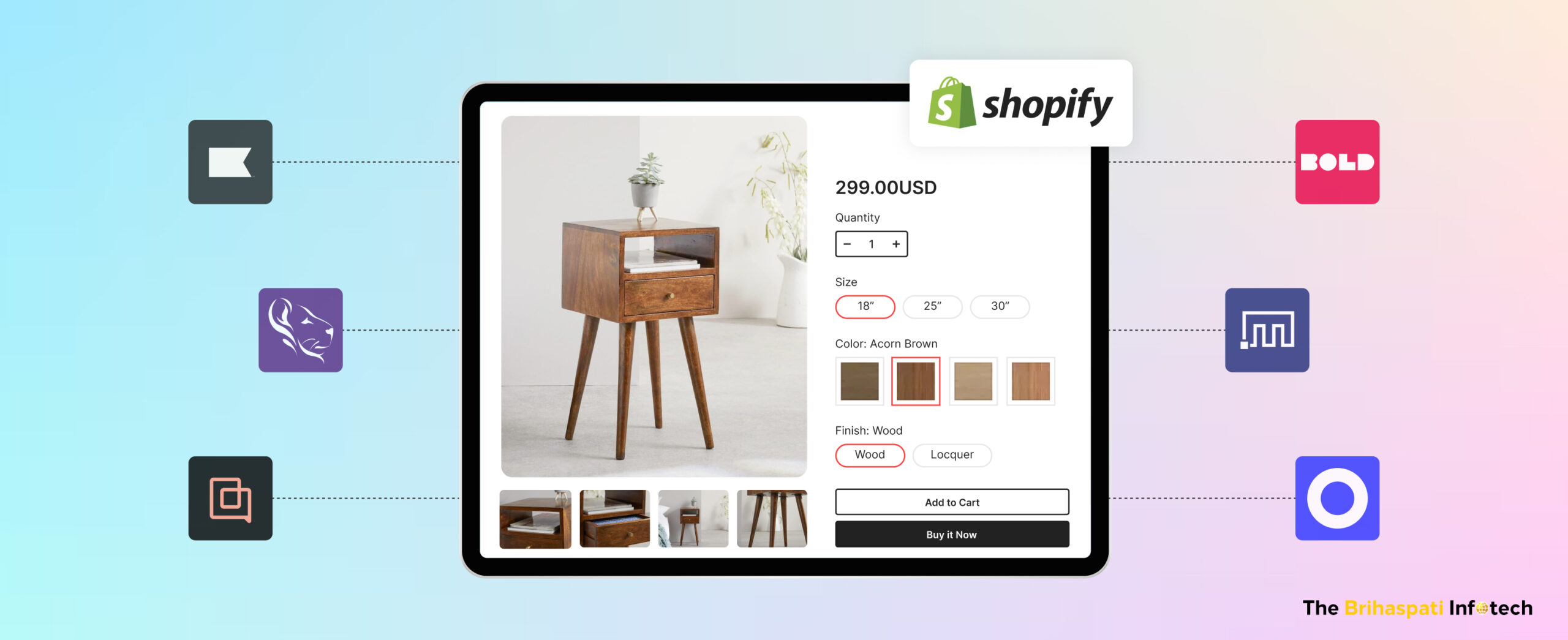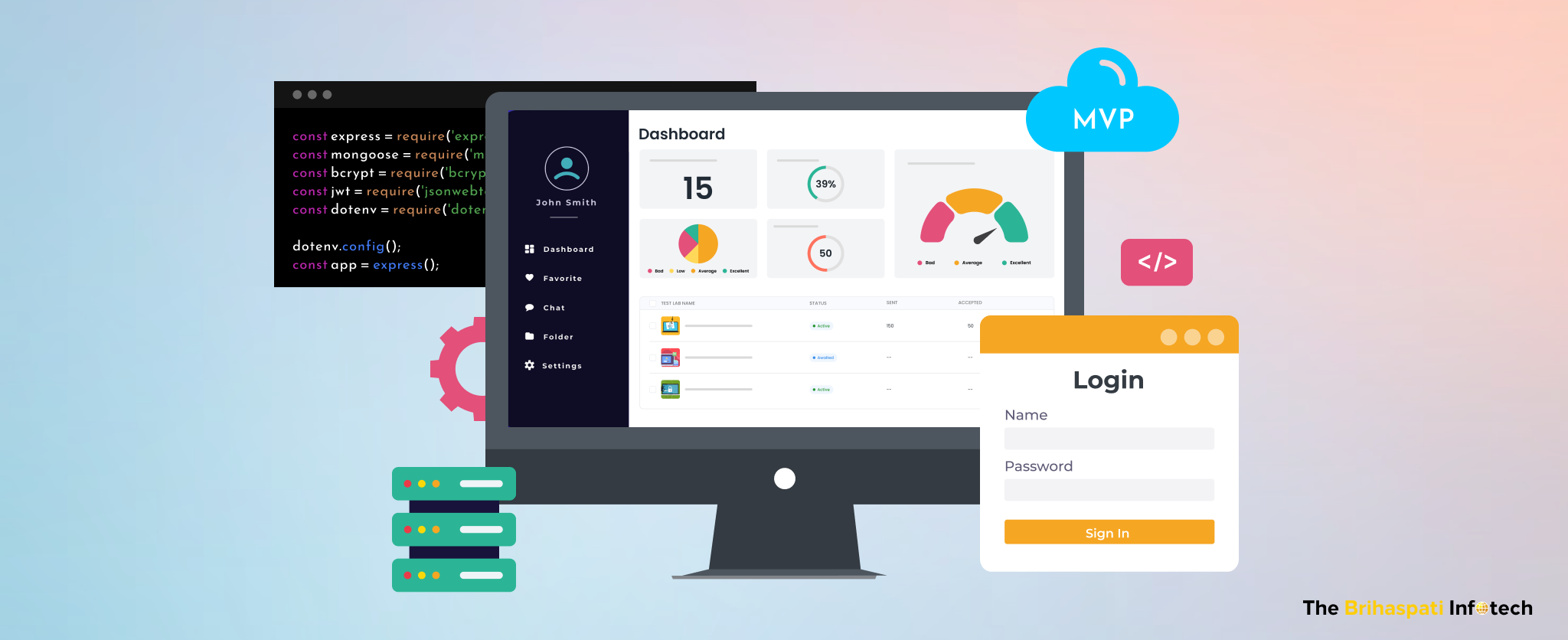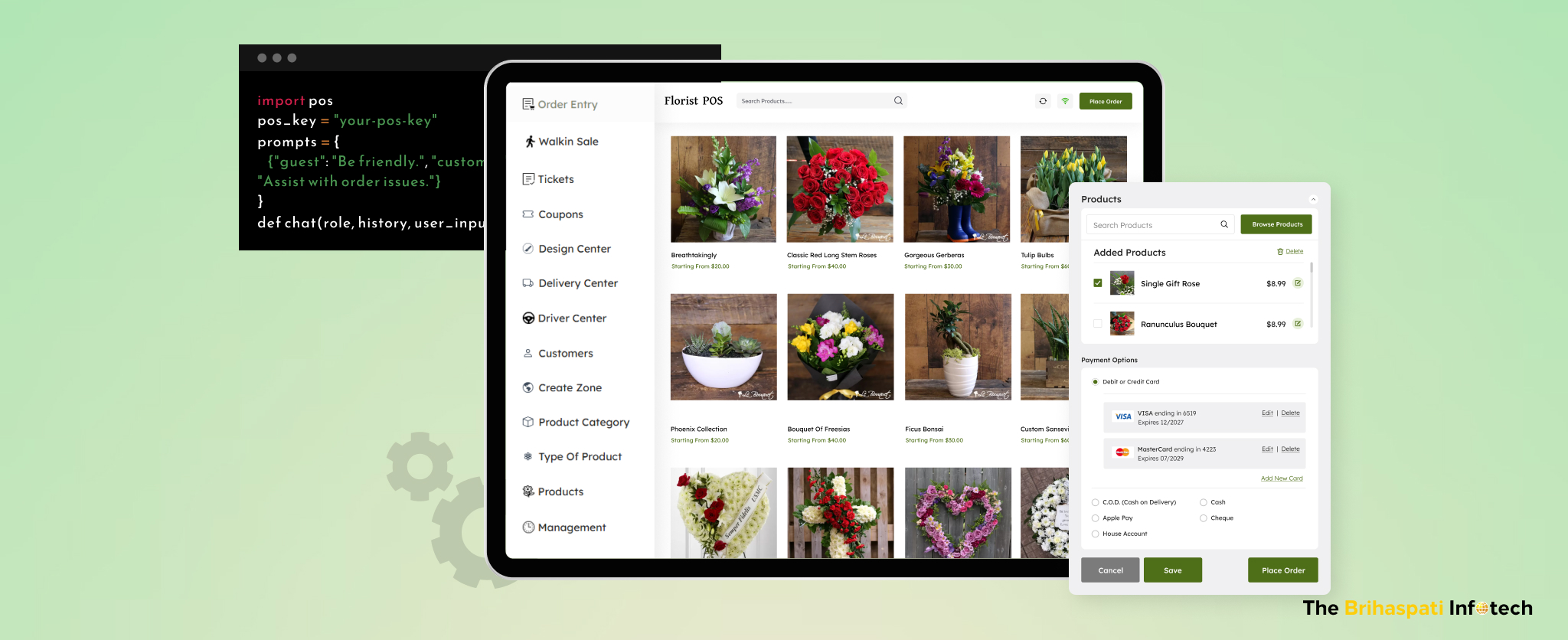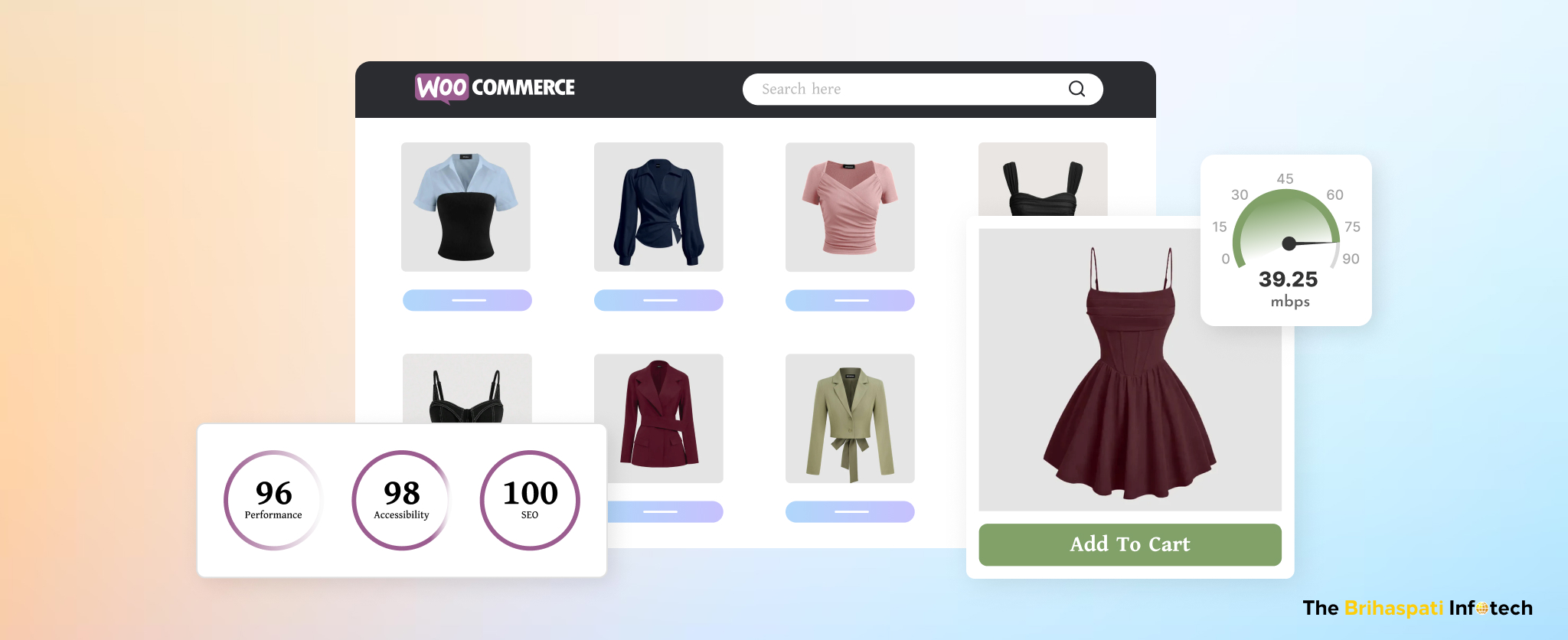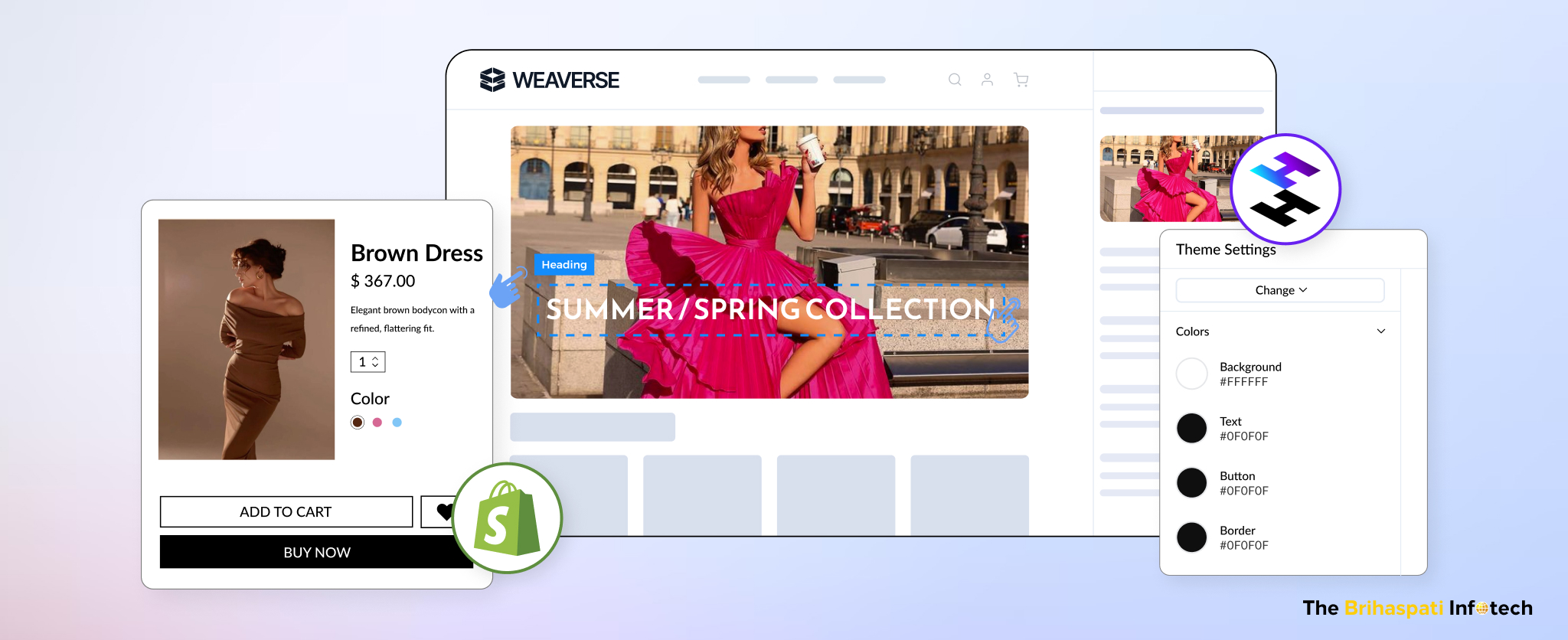
Scalable SAAS Architecture: 9 Best AWS Practices
Overview
With the SaaS market expected to surpass $1.25 trillion by 2034, businesses must prioritize scalability to avoid bottlenecks, security vulnerabilities, and high operational costs. A well-designed, scalable SaaS architecture is essential for sustainable growth and performance.
At TBI, our SaaS development experts specialize in building scalable SaaS solutions, ensuring businesses can scale efficiently while minimizing costs. By leveraging AWS services like auto-scaling, serverless computing, and optimized storage, we help companies create flexible and cost-effective architectures that grow with their needs.
In this blog, we’ll share nine best AWS practices for building scalable and high-performance SaaS architecture, allowing you to future-proof your infrastructure without breaking the bank. Let’s explore!
Building a Scalable SaaS Architecture: Key AWS Practices
At The Brihaspati Infotech, our team worked for a client to migrate their website from Linode to AWS, ensuring a highly scalable and resilient infrastructure. We designed a headless architecture with optimized AWS components, including auto-scaling, load balancing, and database optimization, to enhance performance and reliability.
In this section, we break down our AWS migration and infrastructure setup into 9 key steps, showcasing how we built a highly efficient and cost-effective cloud environment for the business.
1. Load Balancing
We implemented an Application Load Balancer (ALB) as part of a scalable SaaS architecture to efficiently distribute incoming traffic across multiple EC2 instances.

How We Implemented:
- ALB Setup: Configured an ALB to route requests between frontend and backend servers.
- SSL Termination: Used AWS ACM for secure HTTPS connections.
- Health Checks: Configured periodic health checks to automatically redirect traffic from unhealthy instances.
- Session Stickiness: Optimized session persistence for a seamless user experience.
2. Auto – Scaling
Our team set up auto-scaling to dynamically adjust resources based on demand, ensuring a scalable SaaS architecture.

How We Implemented:
- Auto Scaling Group (ASG): Configured EC2 instances to scale between 1 to 4 instances based on CPU utilization.
- Scaling Triggers: Increased instances when CPU usage exceeded 70%, scaled down when below 40%.
- Cool-down Periods: Set a customized cooldown period to prevent unnecessary scaling fluctuations.
3. Database Scalability
A robust MySQL 8 database setup was designed to handle increasing data loads without compromising performance, supporting our B2B SaaS growth strategy.

How We Implemented:
- RDS Selection: We hosted the latest MySQL version on an Amazon RDS instance to ensure high availability and scalable performance.
- Performance Insight: Enabled AWS Performance Insights, allowing real-time analysis and optimization of slow queries.
- Optimized Storage: Allocated flexible storage to efficiently handle intensive read/write operations and support fast database queries.
- Backup & Retention: Configured daily backups with a customized retention policy.
- Database Security: Configured security groups to restrict public database access.
4. Caching Strategies
To improve performance and reduce database load, caching mechanisms were incorporated as part of our SaaS growth strategy.

How We Implemented:
- Database Query Caching: Optimized MySQL query execution to prevent redundant database hits.
- Application-Level Caching: Integrated caching mechanisms for frequently accessed data.
- Content Delivery Network (CDN): Considered AWS CloudFront for static content caching.
5. Asynchronous Processing
We implemented asynchronous processing to prevent API bottlenecks and ensure smooth order processing, aligning with our B2B SaaS growth strategy.

How We Implemented:
- Job Queues: Used AWS SQS (Simple Queue Service) for delayed execution of resource-intensive tasks.
- Event-Driven Triggers: Configured Lambda functions to handle specific backend events asynchronously.
- Batch Processing: Optimized data-heavy processes to run periodically instead of real-time.
6. DevOps & CI/CD
To streamline deployments and reduce downtime, we implemented a robust DevOps pipeline, aligning with our SaaS growth strategy.

How We Implemented:
- CI/CD Pipelines: Used GitHub Actions to automate builds, testing, and deployments.
- AWS CodeDeploy Integration: Used Deployment Group to automate code deployments across EC2 instances, ensuring zero-downtime updates and rollbacks.
- Manual Patching Updates: Configured cron jobs for scheduled server updates.
7. Multitier Architecture
We adopted a three-tier architecture to enhance security and modularity, ensuring a scalable SaaS architecture.

How We Implemented:
- Database Layer: AWS RDS MySQL instance with strict access controls.
- VPC Segmentation: Used public and private subnets to isolate critical components & NAT Gateway for outgoing traffic.
- Frontend Layer: Deployed the frontend on AWS Amplify for seamless hosting and scalability. Alternatively, an EC2 instance can be used for hosting the React-based headless frontend.
- Application Layer: Deployed using AWS Elastic Beanstalk for efficient application management. Alternatively, backend APIs can run on separate EC2 instances for greater scalability.
8. Monitoring and Analytics
We integrated AWS CloudWatch to ensure real-time performance tracking and issue detection, supporting scalable SaaS architecture.

How We Implemented:
- CloudWatch Alerts: Set up thresholds for CPU, memory, and disk usage.
- SNS Notifications: Configured alerts for auto-scaling events, high CPU usage, and database failures.
- Log Management: Retained logs for specified periods to facilitate historical trend analysis.
9. Cost Optimization
To control infrastructure costs while maintaining performance, several cost-saving strategies were applied as part of our SaaS growth strategy.

How We Implemented:
- Reserved Instances: Strategized long-term EC2 commitments for potential cost savings of 40-60%, contingent on finalized agreements.
- Auto-Scaling Efficiency: Reduced active instances during low-traffic hours.
- Data Transfer Optimization: Minimized cross-region data movement to reduce transfer costs.
- Tracking and Managing Expenses: Actively tracked NAT Gateway, data transfer, and backup storage costs, setting up budget alerts at custom thresholds to optimize expenses effectively.
Scaling SaaS Architecture: Overcoming Key Challenges
Scaling a SaaS architecture comes with several challenges, from maintaining high performance under increasing workloads to ensuring security and automation. Here’s how we addressed them.
1. Addressing Performance Bottlenecks
- High traffic spikes and resource-intensive operations caused performance degradation.
- We optimized auto-scaling policies, leveraged load balancing, and implemented efficient caching strategies to enhance response times and system stability.
2. Scaling Databases for Growing Workloads
- Traditional database configurations struggled with increasing transaction volumes.
- We optimized query execution, implemented asynchronous processing, and leveraged AWS Performance Insights to monitor and fine-tune database performance, ensuring high availability and scalability.
3. Automating Deployment & Infrastructure Management
- Manual deployments and infrastructure scaling required significant effort and time.
- We automated deployments using GitHub Actions for seamless build, testing, and release cycles. AWS CodeDeploy streamlined EC2 deployments with zero-downtime updates and rollbacks, reducing manual effort and improving scalability.
Frequently Asked Questions
Ans: Yes, an existing SaaS can be made more scalable by optimizing infrastructure, automating deployments, and leveraging cloud-native solutions. Implementing CI/CD pipelines, auto-scaling, and database performance tuning ensures seamless growth without performance bottlenecks.
Want to scale your SaaS efficiently? Get in touch with our SaaS development experts today!
Ans: To optimize costs when scaling B2B SaaS applications on AWS, strategies like Reserved Instances for long-term savings, auto-scaling to match demand, and optimizing data transfer costs can be implemented. Additionally, leveraging AWS Savings Plans, using spot instances for non-critical workloads, and monitoring expenses with AWS Cost Explorer help reduce unnecessary spending.
Get in touch with our SaaS development experts to optimize your AWS costs today!
Ans: Scaling a SaaS business requires optimizing cloud infrastructure, automating deployments, and leveraging cost-effective solutions like reserved instances and dynamic scaling. Implementing CI/CD pipelines, database performance tuning, and data-driven decision-making ensures seamless growth while maintaining efficiency.
Get in touch with our SaaS experts to scale your business effectively!
Ans: Typically, scaling a B2B SaaS application takes 2 to 3 weeks, depending on infrastructure, automation, and business requirements.
Contact us for a customized scaling plan tailored to your needs!
Ans: The cost of scaling a SaaS application varies based on infrastructure, user growth, and feature complexity.
Schedule a consultation & get a custom quote for your project!
Conclusion
Scaling a SaaS application requires a strategic approach to performance optimization, cost management, and automation. By leveraging AWS services, CI/CD pipelines, and database optimizations, businesses can enhance scalability, improve reliability, and drive sustainable growth.
At The Brihaspati Infotech, we specialize in building scalable SaaS solutions tailored to your business needs. From infrastructure automation to cost-efficient cloud strategies, our team ensures seamless scaling for long-term success.
Looking to scale your SaaS efficiently? Get in touch with our experts today
Stay Tuned for Latest Updates
Fill out the form to subscribe to our newsletter



